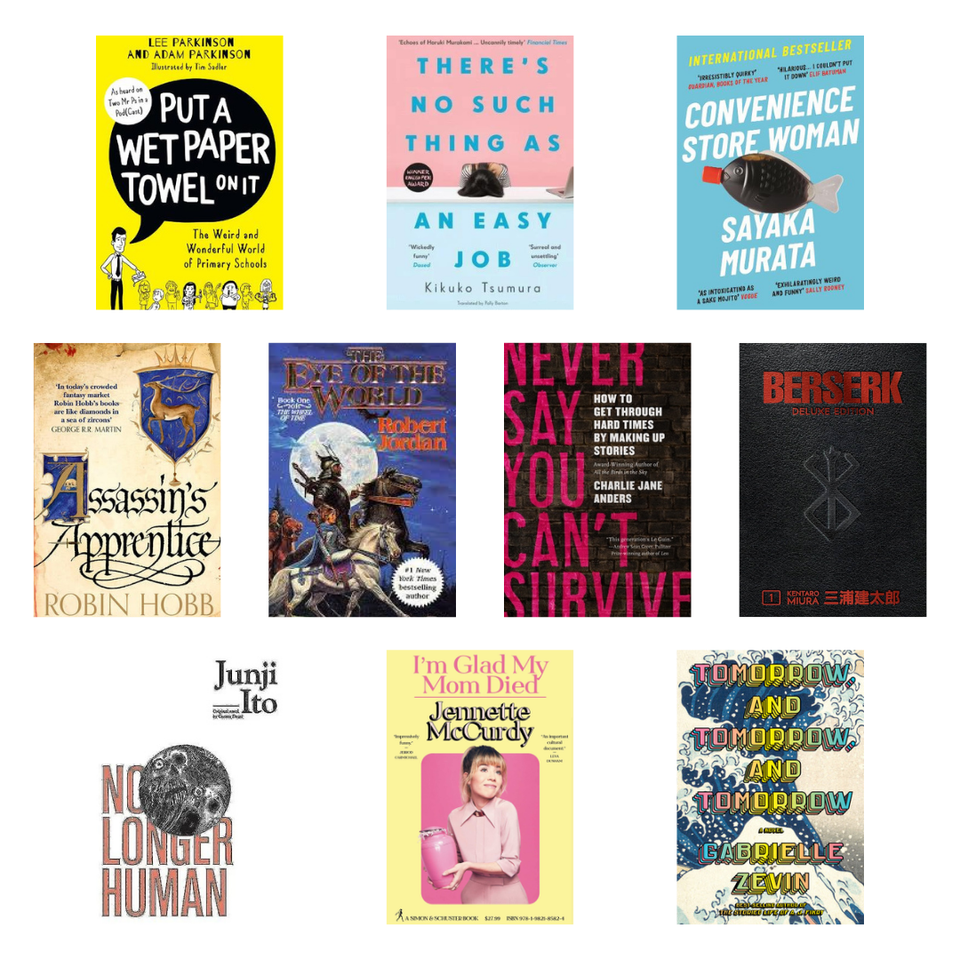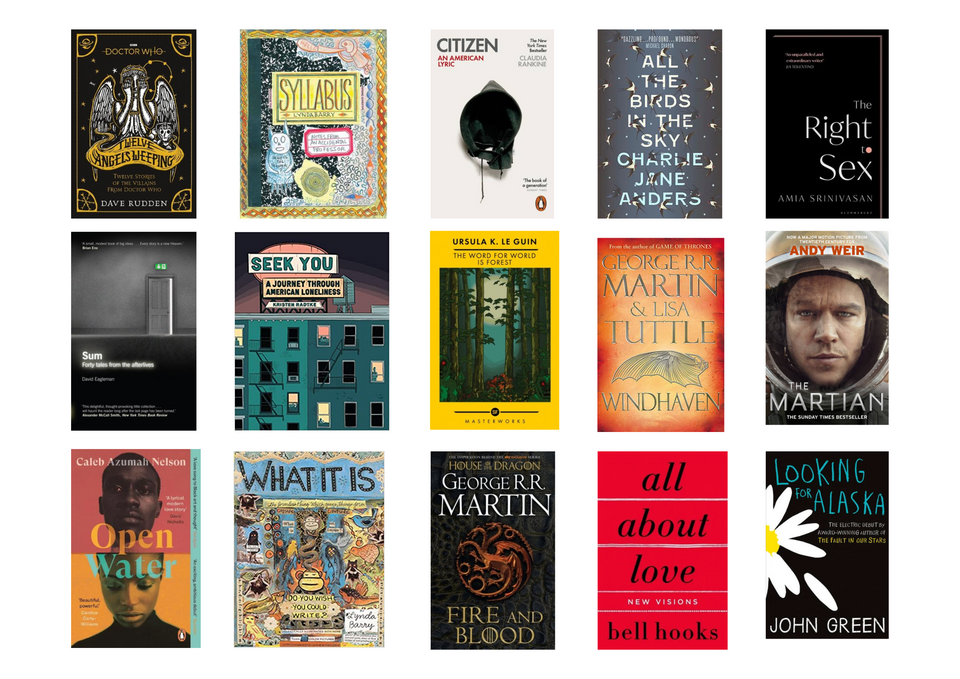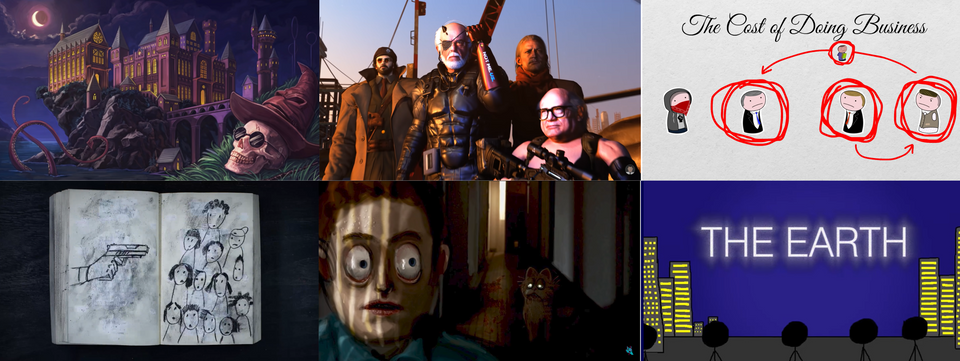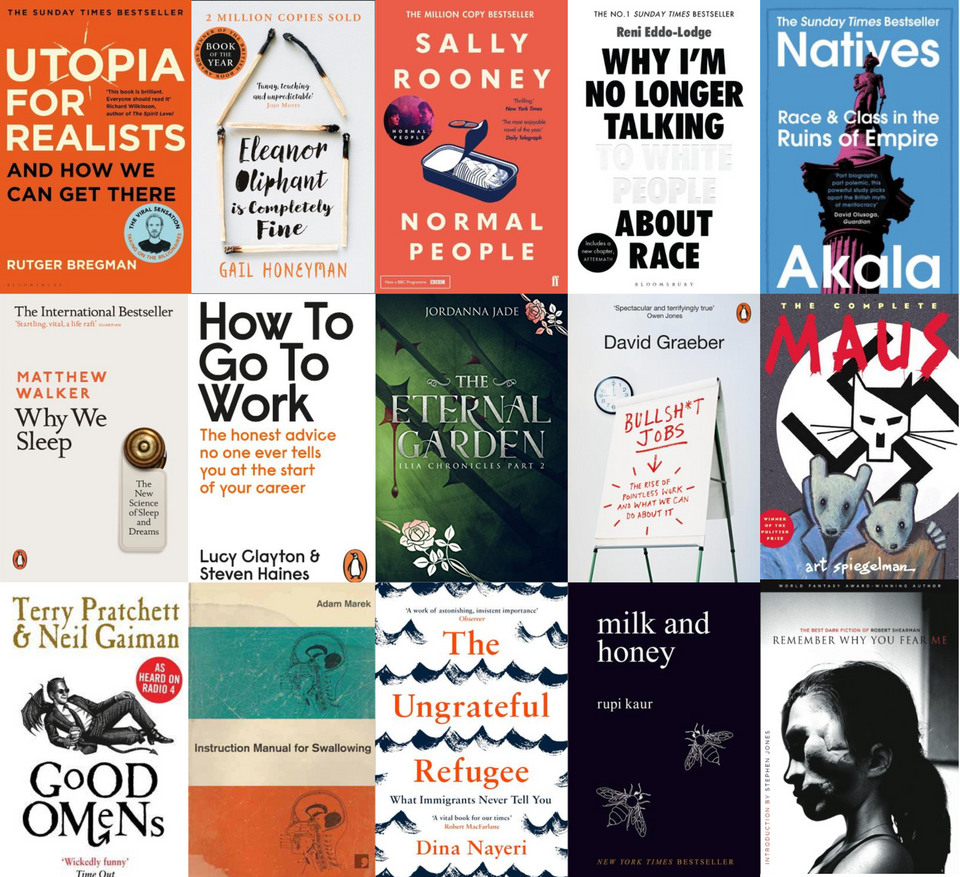My Favourite Books of 2021
The top 20 books I most enjoyed reading this year.
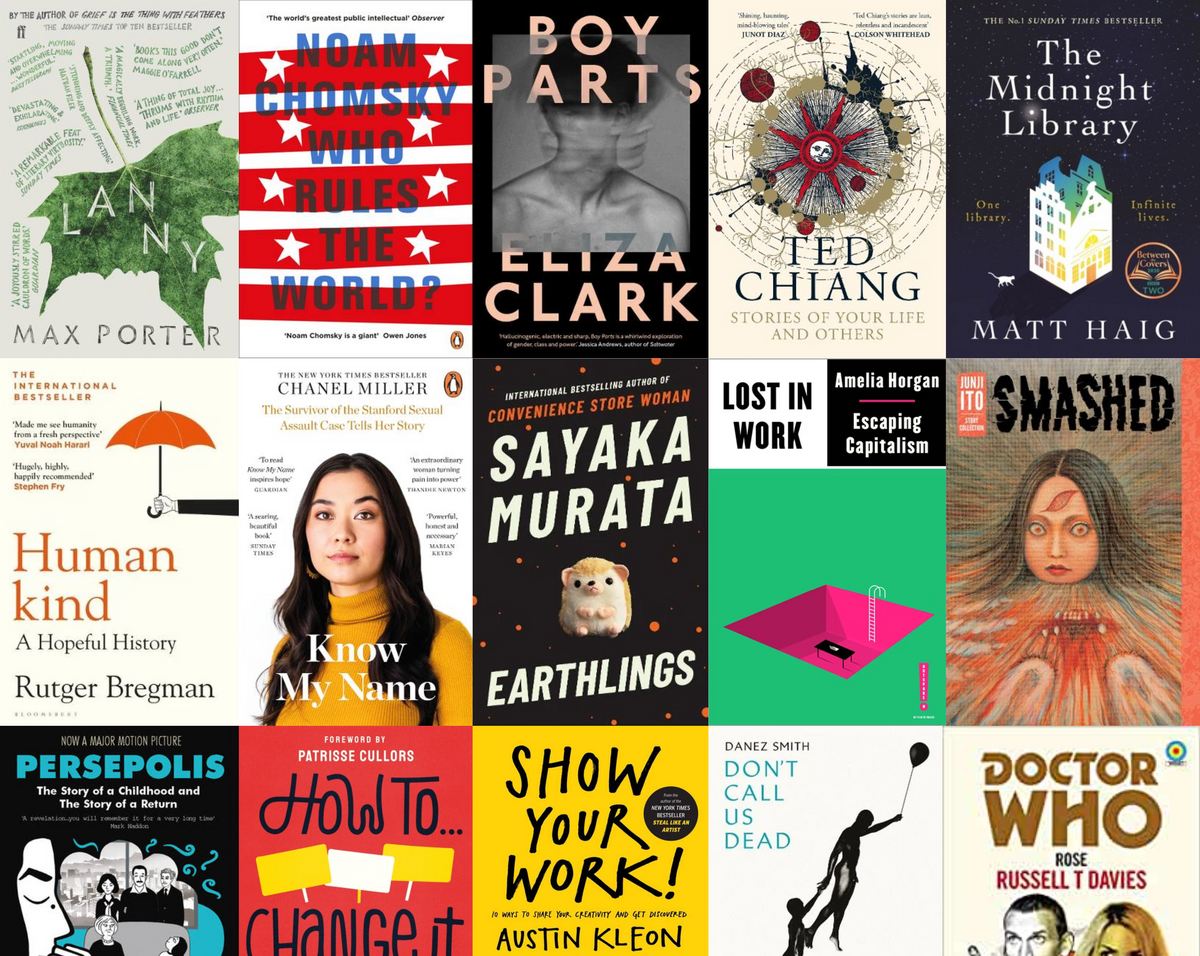
Previously: My Favourite Books of 2020
I read 45 books this year and started a 46th on Christmas Day. Out of all those books, there was not a single one I'd call a bad read. Thus, narrowing down a list of favourites from this year wasn't easy.
In the end, after much deliberation, I settled on the 20 listed below. So here are my favourite reads of 2021, listed in the order that I read them:

Lanny by Max Porter
The writing style is very different to what I'm used to, especially in sections written from the perspective of the village spirit, Dead Papa Toothwort, where the text doesn't stick to a straight line. But I love the unconventional. It did take the whole first chapter for me to really get into the book, but by the second chapter I was hooked. I quite literally couldn't put the book down (and I don't use that cliche lightly). It's also a short-read, my copy coming in at 210 pages. Novelists who surprise me with what they can do with the form always impress me, and I must definitely seek out Porter's other work — especially his first novel, Grief Is the Thing with Feathers.

The Bullet Journal Method by Ryder Carroll
Towards the end of 2020, I started a Bullet Journal but really took it seriously at the start of this year and it has changed everything. Not only was my BuJo a precursor to kickstarting my daily journaling habit, but it's helped me keep a record of my days and improved my productivity. The Bullet Journal Method is a self-help book, but its advice on how to start your own BuJo and how to use it is valuable advice that has genuinely improved my days. If you've ever considered starting your own BuJo but aren't sure where to start, this book is a good entry point. There's also the YouTube channel that's worth checking out if you want to find out more.

The Midnight Library by Matt Haig
Haig is the kind of writer you go to for comfort. The protagonist of this book gets the chance to experience an infinite number of other lives she could have lived, each life shelved inside a book within the infinite Midnight Library. It's a narrative centred around themes of mental illness, regret and self-acceptance, and it was something I needed to read this year as I went on my own journey of questioning and understanding my own life choices. Full of quotes you'll want to transcribe, it's a great read if you're feeling lost.

Who Rules the World? by Noam Chomsky
As long as the general population is passive, apathetic, and diverted to consumerism or hatred of the vulnerable, then the powerful can do as they please, and those who survive will be left to contemplate the outcome.
– Noam Chomsky
Despite the dense text and sometimes dry prose, Noam Chomsky's Who Rules the World? is an eye-opening read that discusses several of the USA's horrific war crimes and coups. It's a wake-up call to how power really works in the world and how it is unjustly upheld. Chomsky also reminds us that we are scarily close to midnight on the Doomsday Clock, which is especially terrifying as this came out in 2016 and the clock hand has only moved closer in the five years since.

Know My Name by Chanel Miller
In 2016, the statement Chanel Miller read in court to the man who sexually assaulted her went viral. Back then, she was known only as "Emily Doe." But in September 2019, Miller dropped the anonymity with the release of her memoir Know My Name, which tells the story of what it's like to be the victim of sexual assault. This book sees Miller reclaim the narrative and in compelling, descriptive prose illustrates the aftermath of what Brock Turner did to her whilst she was unconscious. Unflinching and enlightening, Know My Name is essential reading that exposes how the system fails victims and protects abusers.
Since no photos of me were published, I was curious about what photos would accompany the articles; a silhouette of a girl looking out a window, a teardrop on a cheek, duct tape over her mouth. All of this was accurate, in terms of the solitude, the silencing. But the incredible thing is that a victim is also the smiling girl in a green apron making your coffee, she just handed you your change. She just taught a class of first-graders. She has her headphones in, tapping her foot on the subway. Victims are all around you.
– Chanel Miller

Rose by Russell T. Davies
I read four of the new Doctor Who Target novelisations, which sees episodes from the revival era re-imagined as short novels. I say re-imagined because whilst the overall stories remain the same as their TV counterparts, the telling is a little different. And I picked Rose from the novelisations I read because it was arguably the most surprising of the four. We get some new side characters, new Autons for Rose and The Doctor to face, extra scenes absent from the episode and even a little twist you don't see coming. One of my favourite additions is that we spend extra time with the tragic Clive Finch and Davies includes all the many Doctors in Finch's collection of Doctor sightings. Davies even teases us with the potential future faces of the Doctor. I'm going to say it: the novelisation of Rose surpasses the TV version.

Earthlings by Sayaka Murata
I didn't know what to expect when going into this short novel by Sayaka Murata, and I think that's the best way to experience the book. Magical realism is possibly the best description of the story's genre. However, I think you'll find many happy to label the book a horror despite not being marketed that way. Earthlings is a tale about survival. Not only must Natsuki survive the many forms of abuse she is forced to endure, but the three key characters must survive the society they call the "baby factory." From the blurb: "Earthlings is an exhilarating cosmic flight that will leave you reeling." Left me reeling it did! The visceral conclusion has stuck with me many months later.

How To Change It: Make A Difference by Joshua Virasami
This is a great lightweight book packed full of practical advice for aspiring activists and snippets of political history that empowers you to learn more. Virasami also includes recommended playlists for each section of the book ("educate", "organise" and "agitate"). There's also some very useful guidance on self-care as an activist as well as some caution around surveillance.

Show Your Work! by Austin Kleon
Austin Kleon has a trilogy of self-help books and I read all three this year. Narrowing down the one to include in my favourites was hard because all three are excellent, and I've re-read multiple sections of all three several times since first reading them. I picked Show Your Work! because it's the one I revisit most, and it's the book that inspired me to start my newsletter. It's another short read, this one you can even get through in a single sitting. It has a load of motivational advice on how to share your art — whatever your art might be — with the world. This is the perfect read if, like me, you find the idea of self-promotion nauseating.

Boy Parts by Eliza Clark
There's far too much praise I could heap on this book. Boy Parts is a story told through the lens of Irina Sturges: a photographer specialising in pictures of men in revealing poses. It pushes us to think about the way women have been framed in our media for decades. But the narrative is more than just an inverted gaze, it’s a story where we can never be sure of reality. Victim blaming and gaslighting galore, Irina’s world is tinged by trauma and the lines between pain and pleasure are blurred. I'd call this my favourite novel of 2021.

Stories of Your Life and Others by Ted Chiang
I was supposed to read this back in my third year of uni for my module on science-fiction, but guess who was a bad student and didn't do their course reading! Four years later, and I've finally ticked this excellent short story collection off my list. The title story is undoubtedly the standout, which plays with time through a non-linear structure whilst also having a lot to say about language and how we communicate. The final story "Liking What You See: A Documentary" is also another personal favourite about implanting "Calliagnosia", which removes a person's ability to experience any aesthetic reaction to faces — designed to eliminate "attractive privilege." The other stories are also engaging reads, each one dealing with intriguing sci-fi concepts.

Lost in Work: Escaping Capitalism by Amelia Horgan
In last year's list of my favourite books, David Graeber's Bullsh*t Jobs was one of my top picks. Horgan's short book isn't as compulsively readable as Graeber's longer book, but Lost in Work is a great introductory text into thinking about the politics of work in society, particularly work under capitalism. If you've ever thought that work really sucks — or even just kind of sucks — then this is a book for you.
Work under capitalism depends on and reproduces inequality. In societies with a widening gulf between the rich and the poor, like the contemporary UK, 'fairer' access to the remaining 'good' jobs ignores a fundamental fact: there will always be more people who lose out on 'good' jobs than there will be those lucky enough to win one. Addressing the problem of work must involve raising the floor rather than making it easier for a tiny number to puncture the ceiling.
– Amelia Horgan
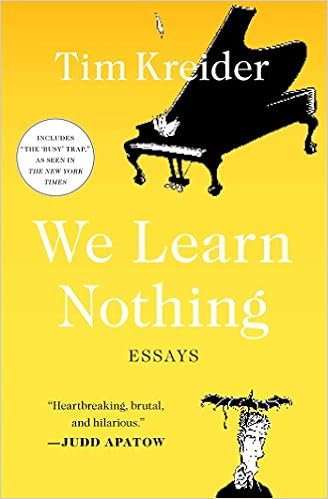
We Learn Nothing by Tim Kreider
Whilst I disliked a few essays from this collection, there were several that I'll read again and again for many years to come. "The Referendum" is one such essay, one I'd happily recommend to anyone. "Lazy: A Manifesto" — originally published as “The ‘Busy’ Trap” in the New York Times — is another worthwhile read. But the two most hard-hitting essays that will stay with me are "The Czar's Daughter", which makes me cry every time, and "The Creature Walks Among Us." A quote from the latter essay struck at something deeply personal (emphasis mine):
Right now I’m neither in love nor heartbroken. I almost hesitate to say this: it still feels provisional, like remission … It’s mostly a relief to be free of it, like not waking up hung over. At those moments when I’ve felt myself starting to relapse—waiting for someone to call who wasn’t going to, that familiar helplessness clutching my gut—I’ve recoiled like a recovering alcoholic waking from a dream of being blacked-out drunk, relieved and thankful that he’s still sober … But I also know that all around me the air is full of songs too beautiful for me to hear. Sometimes I’ll see a pair of electric-blue damselflies coupled in flight, and I remember how it felt to be weightless.
– Tim Kreider

Humankind: A Hopeful History by Rutger Bregman
Rutger Bregman's Utopia for Realists was my favourite book of last year, and Humankind might also be my favourite non-fiction read from this year. The book shifted how I view humanity, and it revealed that much of what we know about obedience and phenomenons like the Bystander Effect is built on falsehoods. I could say so much about this book that I probably need to give it a re-read and blog my way through it. There are just so many enlightening chapters that fill you with a genuine sense of hope in an often cruel and hopeless world. It's a call for more compassion and makes you realise we have lived so long not because it's a game of "survival of the fittest" but rather a "survival of the friendliest."

Don't Call Us Dead by Danez Smith
For someone who enjoys writing poetry, I don't read enough of it. I got a few poetry collections this year to try and change that a little, and my favourite was Danez Smith's second poetry collection Don't Call Us Dead. Smith is a genderqueer African-American poet who writes about the Black and LGBTQIA+ experience in America with this collection. Some of their poetry is more than just powerful words, how they're arranged occasionally makes beautiful pictures of word art. I loved many of the poems in this book, but some favourites include "dear white america", "dinosaurs in the hood" and "every day is a funeral & a miracle."
do i think someone created AIDS?
maybe. i don't doubt that
anything is possible in a place
where you can burn a body
with less outrage than a flagDanez Smith, "every day is a funeral & a miracle"

Smashed by Junji Ito
What Junji Ito sometimes lacks in endings and dialogue he more than makes up for with his masterful illustrations of horror and ability to come up with ingenious, terrifying concepts. Smashed is a manga collection of short stories by Ito, ranging from middling levels of creepy to grotesque tales of visual terror. With such heavy emphasis on the haunting artwork, this is less a collection of scary stories and more a showcase of twisted nightmares.

Misfits: A Personal Manifesto by Michaela Coel
It's another little book that's perfect if you're looking for a quick read. Coel writes with so much passion and compassion that is an inspiring read for any misfit out there with a creative drive. It also serves as a call to action, a call to be brave and admit when our beliefs are wrong and to change them. It's a call to stand up for your principles and your vision whilst also calling for transparency. It's a call for each of us to play our part in fixing this broken house. This is specifically applied to the creative industries, but I think it has a more general application too.
Some find themselves so high their photographs are showcased at prestigious exhibitions in Venice. A Queen was recignised in 2017 — Queen Khadija Saye — from the heights of Grenfell Tower. But when the narrative of climbing makes others put profits before people, fitting cheap cladding into their tower blocks, what then? How many other potential artists with stories we want and need have we lost for the sake of financial profit; have we lost to thoughtless education systems, thoughtless nurturing, thoughtlessness? Why are we platforming misfits, heralding them as newly rich successes, whilst they balance on creaking ladders with little chance of social mobility?
– Michaela Coel

The End: Surviving the World Through Imagined Disasters by Katie Goh
If you’re into disaster fiction and want something you can devour in just a few sittings then I cannot recommend this enough. Easy to read and packed with great insights into the appeal of disaster fiction, covering four different kinds of world-ending calamities: pandemic, climate, extraterrestrial and social. Katie Goh applies a critical lens to our obsession with disaster fiction that is enlightening in several places.

Persepolis by Marjane Satrapi
A graphic memoir that is filled with humour and wit but also full of heartbreaking tragedy, violent horrors and struggles against rage-inducing oppressive ideals. Opening during the 1979 Islamic Revolution (as it is referred to in the comic) from the perspective of a young Marjane Satrapi. This is Satrapi's coming-of-age story set within the oppressive society of Iran and later abroad in Vienna. The narrative covers a great number of political tragedies as well as more personal ones, whereby Satrapi weaves her personal strifes into the commentary of the societies she finds herself living in. And her art style manages to feel minimalist despite nailing even minute details that make every single character distinct.

We All Hear Stories in the Dark by Robert Shearman
"Once upon a time there was a man who lost his wife, and tried to find her by reading all the books in the world." A collection of 101 stories but with a twist: you have to read them in the right order for the protagonist to win back his wife. But the journey you take will almost certainly be different to anyone else who reads this three-tome book. When one story ends, you'll be asked a series of brief questions and your answer will take you to your next story. We All Hear Stories in the Dark is as much a game as it is a short story collection. And although my route only took me through a pitiful 22 out of 101 stories — failing to save the man's wife — I was utterly enthralled every step of the way. There are 79 stories I still need to read. I have to go back, and I will.
Thanks for reading through the list! I hope it's prompted you to add to your own ever-growing TBR piles.
As I mentioned earlier, I enjoyed pretty much every book I read this year — I could offer praise to every single one. So if you're curious about what else I read, here's the full list:
- Suzanne Collins, The Hunger Games (whole trilogy)
- Robert Shearman, They Do The Same Things Different There and Dalek
- Niran Vinod & Damola Timeyin, How To Build It: Grow Your Brand
- Anthony Anaxagorou, How To Write It: Work With Words
- Neil Hilborn, Our Numbered Days
- Junji Ito, Gyo
- Steven Moffat, The Day of the Doctor
- Paul Cornell, Twice Upon a Time
- Chuck Palahniuk, Fight Club
- Terry Pratchett, The Colour of Magic
- Austin Kleon, Steal Like an Artist and Keep Going
- George R. R. Martin, Dreamsongs (Books One & Two)
- Natalie Fiennes, Behind Closed Doors
- Alice Walker, The Color Purple
- Mark Fisher, Capitalist Realism
- Nayrouz Qarmout, The Sea Cloak and Other Stories
- Patricia Lockwood, Motherland Fatherland Homelandsexuals
- Jordanna Jade, Choosing Divinity
- Brian K. Vaughan & Fiona Staples, Saga (Books One, Two and Three — one day I'll dedicate a whole post to these incredible books)
